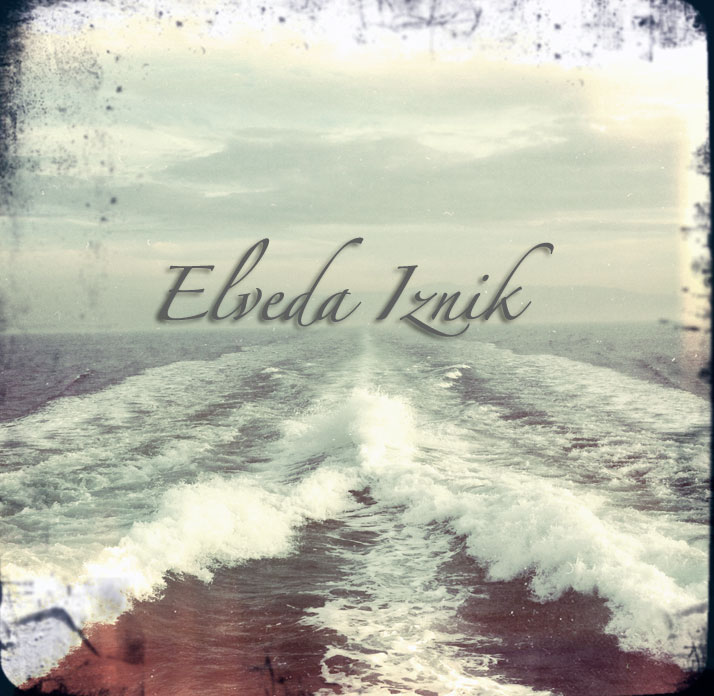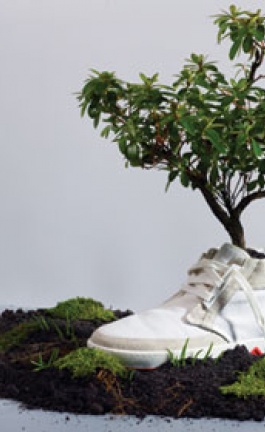photo © Costas Voyatzis for Yatzer.com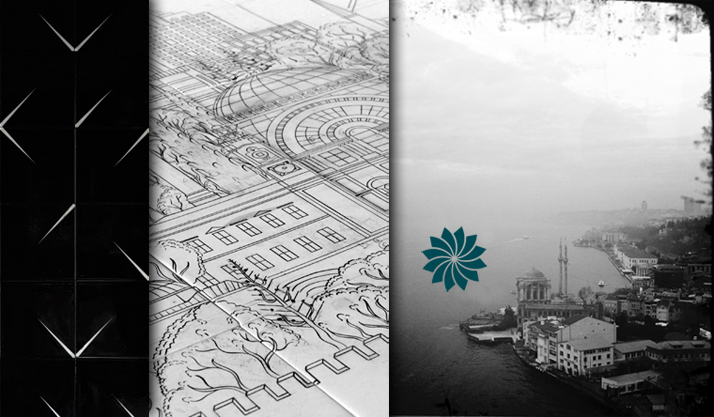
"The celebrated 'RUM' tableware of Iznik is more delightful than that of China and even more beautiful."â¨
Badr al-din-Ghazi, Arab wayfarer, 1530
19- 23 January 2011 >> A beautiful short trip to Turkey becomes a once in a lifetime experience.
Where history meets with great ingenuity, the economic and cultural growth comes as no surprise. The controversy about the traditional dimensions in art is easily circumvented, in reality there are no right answers at all, for” keeping up or breaking with” tradition does not remain a dilemma at least no more in such a place bursting with activity. In reality, the superficially oxymoron vexed question, assumes an entirely new meaning, as it opens new gates of wisdom, bridging cultural gaps, and bringing us even closer.
Sultanahmet Mosque (most famous as the "Blue Mosque")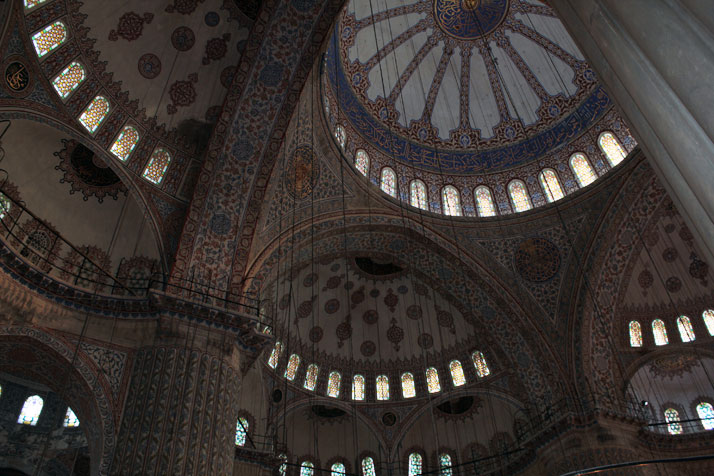
photo © Costas Voyatzis for Yatzer.com
The Iznik foundation press trip lasted for a couple of days. On both sides of Bosphorus, lost at the backstreets of Istanbul and Iznik, we had the chance to be guided to and admire the masterpieces of the ceramic culture adorning, among others, the Topcapi palace and the Sultanahmet Mosque (most famous as the "Blue Mosque"). All things considered, it was not only about the impressive work that the Iznik foundation does, resurrecting a culture that reached its pinnacle in the 16th century, but about getting to know how important hospitality is, as well. Smiling faces everywhere, from the staff working and cooperation with the Foundation, to the people we met in local bars, restaurants, in the streets and sokakia (a word widespread used in Greece, but which origin is Turkish), who kindly welcome the traveler, seduce him and bring him closer to the understanding of the local history and culture. Art is, of course, an ineluctable part of culture, and architecture the indispensable prominence, the inextricably necessary evidence of human brilliance. Did I forget to mention that you are welcome to a city adorned from Ottoman emperors?
Topcapi Palace,Marmara, Istanbul. 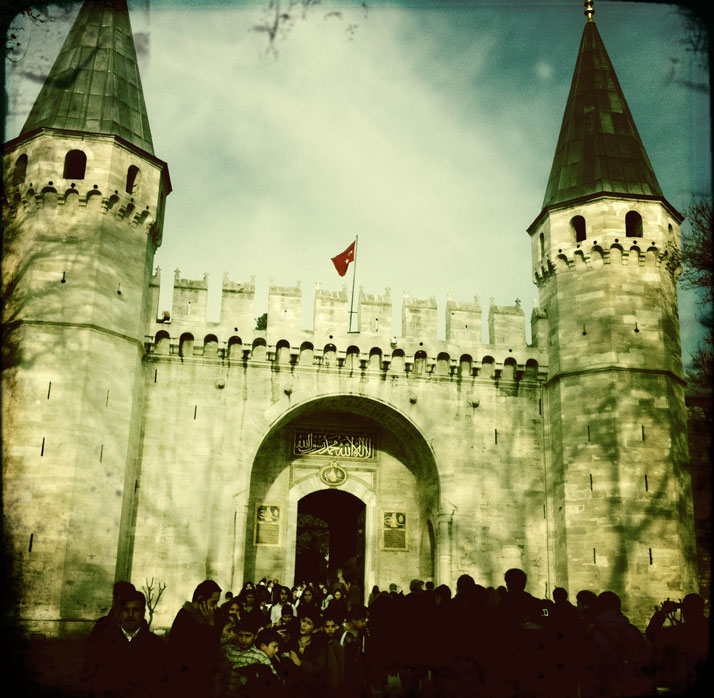
photo © Costas Voyatzis for Yatzer.com
My advice, in this regard, is “travel”, as often as possible, maybe for a reason or even with no reason at all! If you hesitate, sit and ponder, Iznik and Istanbul have much to show, and even more to offer.
We have come to take for granted how magnificent the universe is, and it is exactly therefore that travelling contributes to making us wiser, while admiring the masterpieces of human inspiration. Some of them are similar to those we have been blessed to witness in our countries, others are exposed in the most prestigious museums of the world and many belong to the “ patrimoine mondial”. However, not all of them are so much enchanting, at least not so enchantingly mystifying as those produced at the pace of the “enchanted forest”, in Iznik.
on our way to Iznik
photo © Costas Voyatzis for Yatzer.com
Located in western Anatolia, Iznik, induces us into a world of an unparalleled ottoman decorative art, the world renowned Iznik pottery, which demonstrates breathtaking beauty despite the simplicity of the materials use.
photo © Costas Voyatzis for Yatzer.com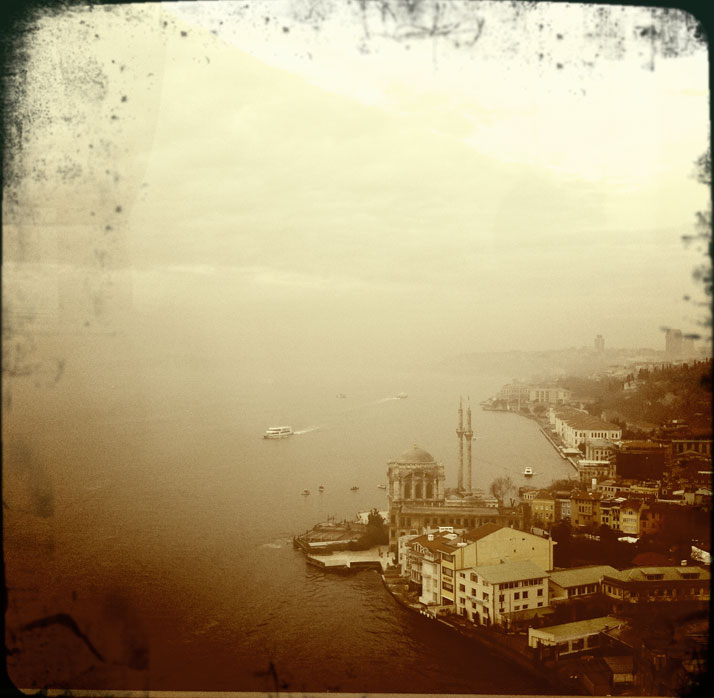
photo © Costas Voyatzis for Yatzer.com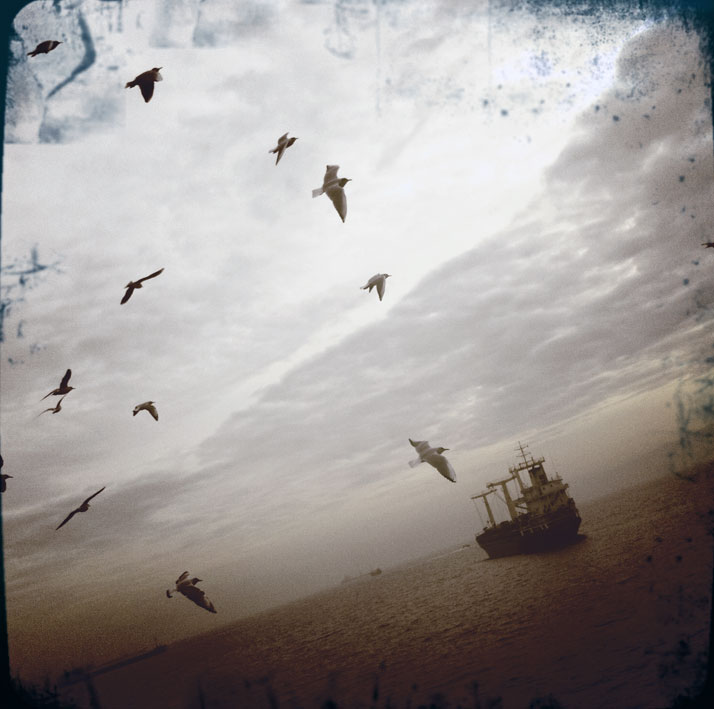
Currently known as Iznik in Turkey, the city of Nicaea (Greek Νίκαια) was founded in 310 BCE by the Macedonian king Antigonus. Lying at the eastern tip of Lake Iznik, south of Izmit, it was originally an important Roman and Byzantine town, which fell to the Seljuks in 1078 and subsequently to the Ottomans in 1331. The city hosted church councils to deal with issues that had brought about turmoil and skirmish in the Byzantine empire, such as the controversy surrounding the impacts of religious sects upon the Byzantine society. As a strategic location, Iznik handed down to us evidence of monumental defensive architecture, however it is nowadays known for its pottery and tiles trade, which keeps flourishing from the 15th century onwards, developing a style having exerted a stark influence on European arts. Handmade ceramics by Ottomans were in great demand, making the history of the” most colorful and decorative pottery ever made”, as put by Sir Harry Garner, a leading example of grandiose human contribution to the arts.
Being the heart of ceramic production for almost 800 years, the Iznik pottery constitutes a very distinctive cultural element of the city, adorning, from the 15th century onwards, imperial buildings and mosques.
into the magic world of Topcapi Palace,Marmara, Istanbul. 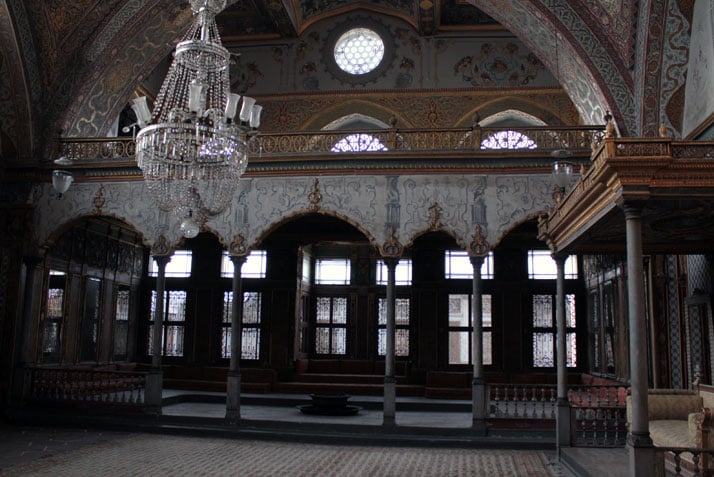
photo © Costas Voyatzis for Yatzer.com
into the magic world of Topcapi Palace,Marmara, Istanbul. 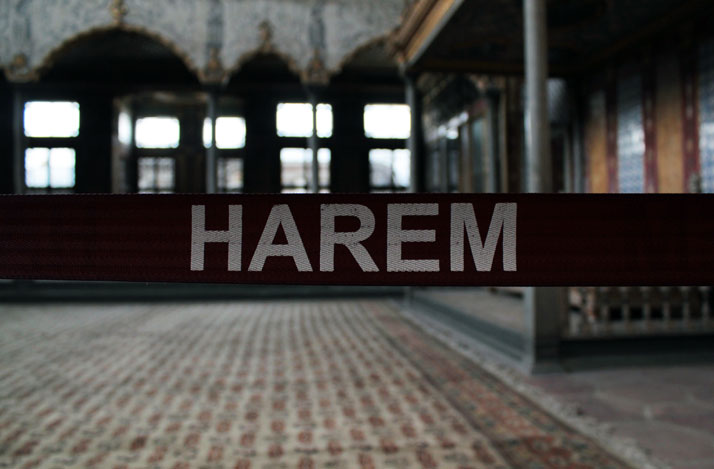
photo © Costas Voyatzis for Yatzer.com
In its initial form, the Iznik pottery followed the Seljuk empire antecedents, but the Iznik vessels soon adapted the much appreciated Chinese porcelain, developing, however, their own distinctive style. Their originality was such that the Iznik vessels outshone their competitor in the markets. Blue and white bowls, vases and lamps with floral designs were made in Iznik in the fifteen century, establishing the ancient style of “Saz” ( enchanted forest), traced back over the ancient Turkey, further incorporating delicate details of calligraphic ornamentation. Colors added to the traditional Iznik palette of blue and white, were the turquoise, mauve, purple, green and exquisite coral red, most of which prepared from metal oxides, reflecting the shades of semi-valuable gems.
into the magic world of Topcapi Palace,Marmara, Istanbul. 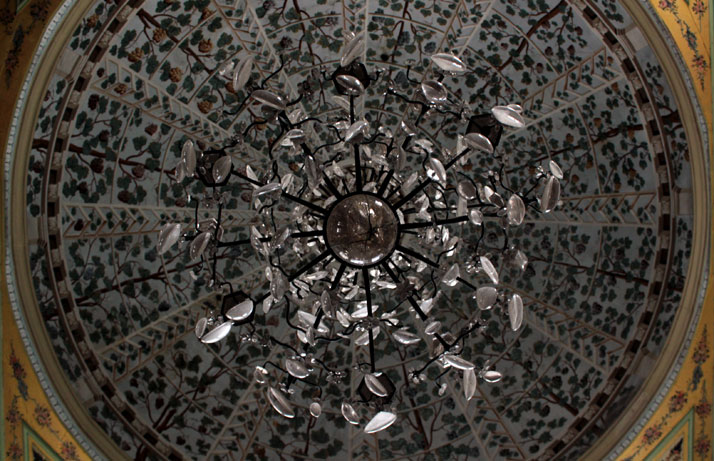
photo © Costas Voyatzis for Yatzer.com
into the magic world of Topcapi Palace,Marmara, Istanbul. 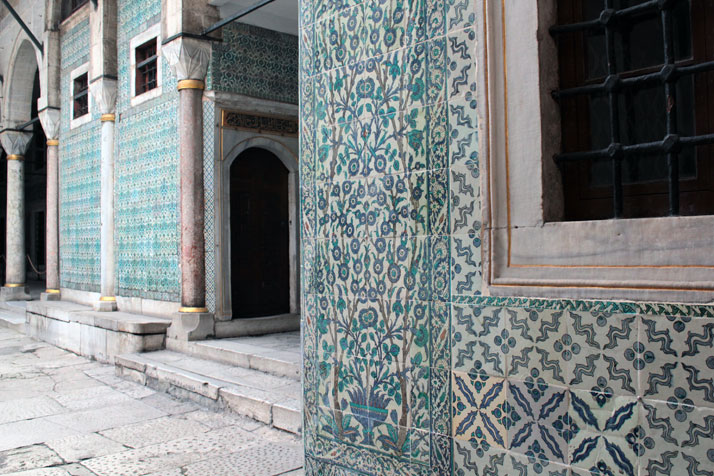
photo © Costas Voyatzis for Yatzer.com
Prof. Dr. IÅıl Akbaygil, founder of the Iznik foundation decided in 1993 to bring this culture again into light, reviving the mysteries of ceramic production and promoting the rich history of the city. Meticulous attention has been paid to the finest detail, along with the thorough scientific research that is conducted in the Foundation, which leads to producing the perfect outcome, leaving the client with a sense of an everlasting aesthetic fulfillment. The glory of old times adapts to the modern architectural needs of any 21st century building, either it is a hotel or a hamam, meeting the requirements of excellence in post modern architecture, as Iznik tiles are produced following the undecipherable ancient secrets (Sır), while using the latest and the most technologically advanced patterns, in a ritual of flexibility of shapes, colors and mysteries.
Designer+historian Gökhan KarakuÅ at the HQ of Iznik Foundation in Istanbul, during his presentation of the geometry of tiles.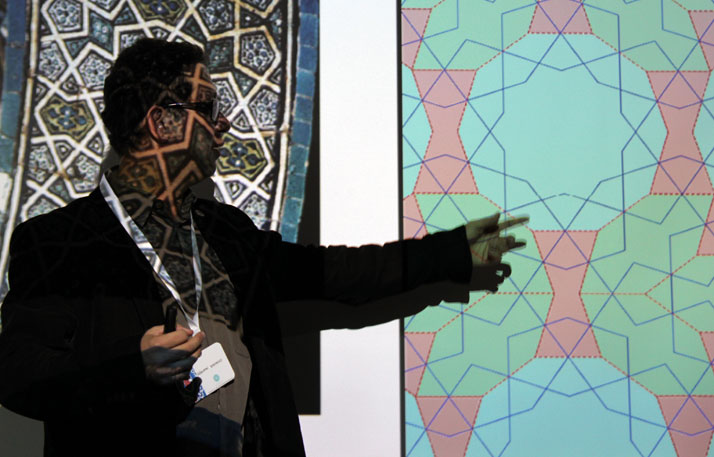
photo © Costas Voyatzis for Yatzer.com
The entrance of Archaeology Museum (Arkeoloji Müzesi) - Istanbul, Turkey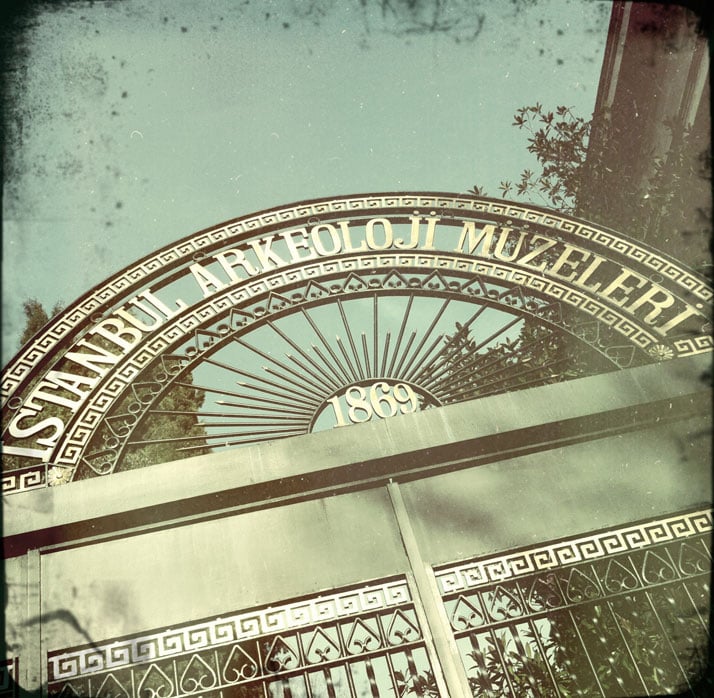
photo © Costas Voyatzis for Yatzer.com
photo © Costas Voyatzis for Yatzer.com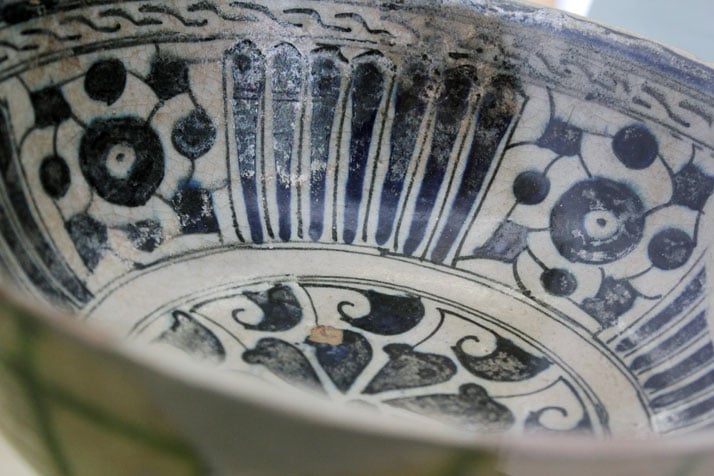
The Çinili KöÅk (Tiled Kiosk) @ Archaeology Museum (Arkeoloji Müzesi) - Istanbul, Turkey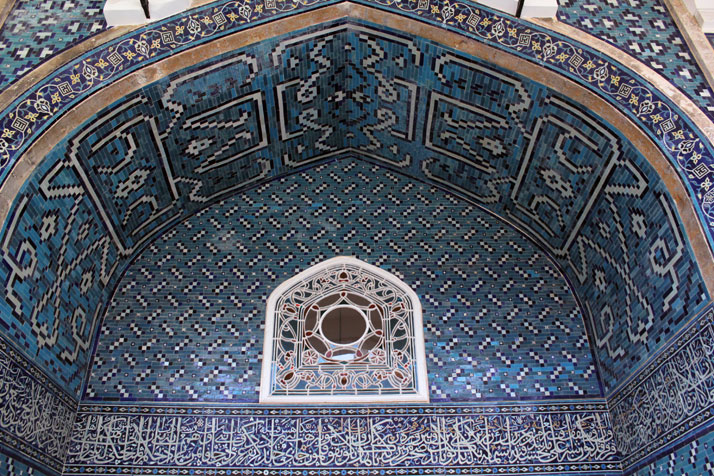
photo © Costas Voyatzis for Yatzer.com
Given that they are comprised of 85% of quartz stone, and the complexity regarding the production process, Iznik tiles resist “time decay”. Their durability may last for even 500 years, so if it ever crossed your mind investing in this ecological friendly form of art, just order your own Iznik tile and realize that you have acquired this beautiful heirloom to pass to as many generations as you might possibly imagine.
photo © Costas Voyatzis for Yatzer.com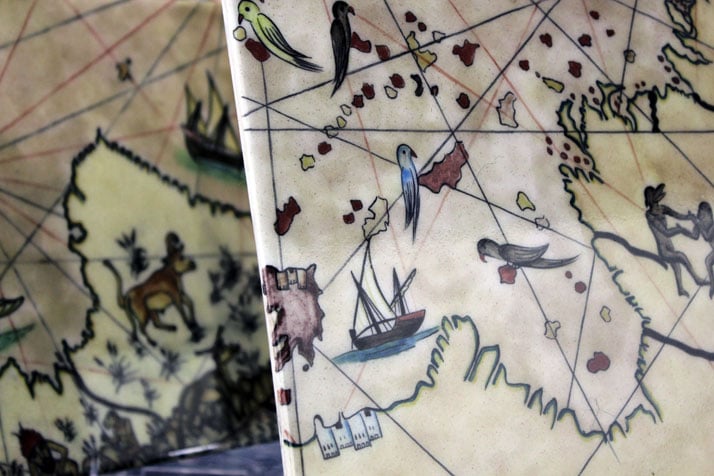
Color variations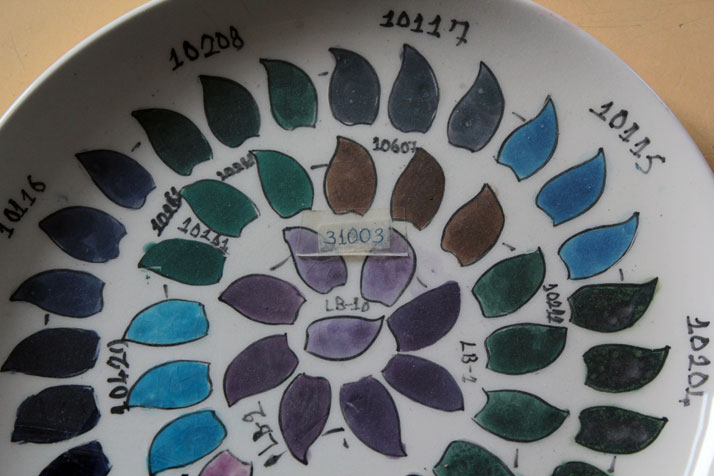
photo © Costas Voyatzis for Yatzer.com
Most importantly, Iznik tiles are handmade. The production process, which lasts for seventy days for each tile, takes place in Iznik, where master and specialized artisans, equipped with the necessary knowledge and expertise, create the finest shapes and designs. The latter can be a demonstration of the traditional shapes that tiles used to depict, usually involving the patterns of ancient times recreated, but can correspond also to whatever the client wants to see, confirming the commitment of the thriving industry to offer their knowledge to the contemporary demands of art.
The art of making Iznik tiles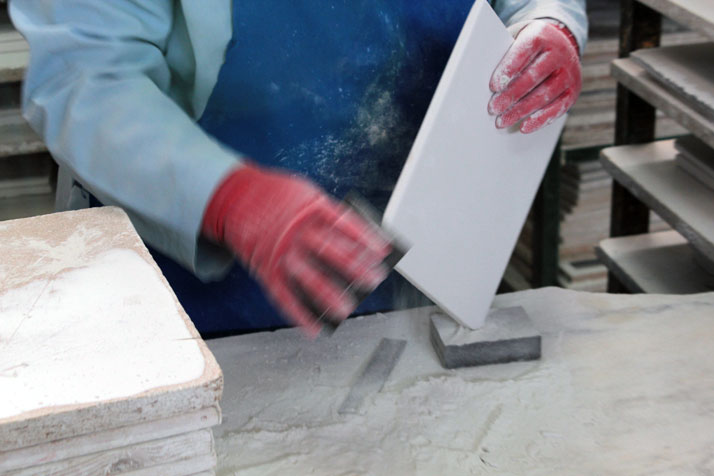
photo © Costas Voyatzis for Yatzer.com
The art of making Iznik tiles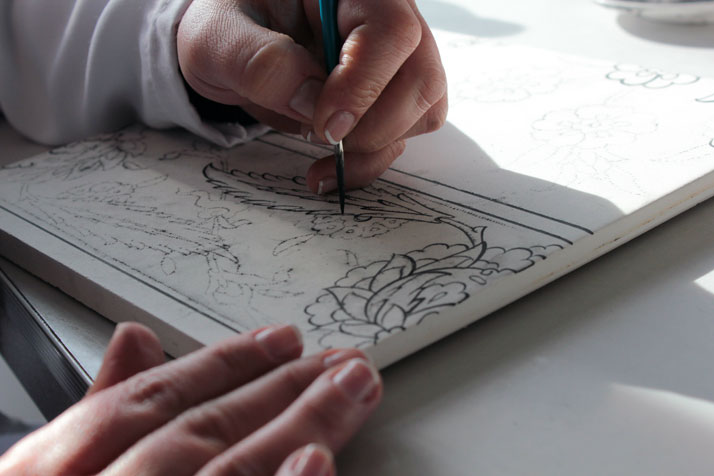
photo © Costas Voyatzis for Yatzer.com
The art of making Iznik tiles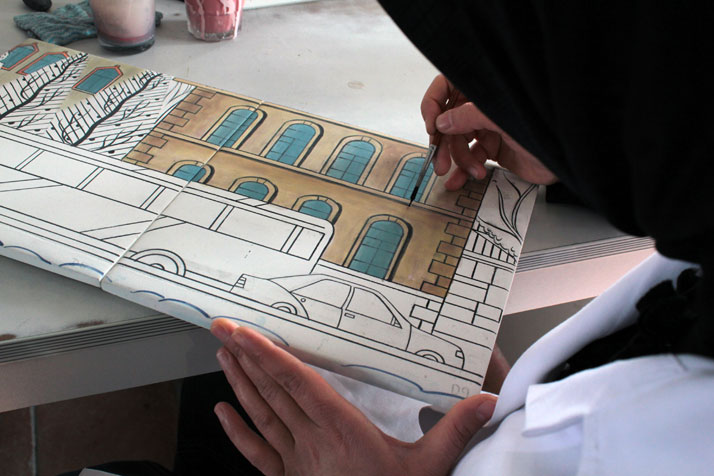
photo © Costas Voyatzis for Yatzer.com
The art of making Iznik tiles
photo © Costas Voyatzis for Yatzer.com
The art of making Iznik tiles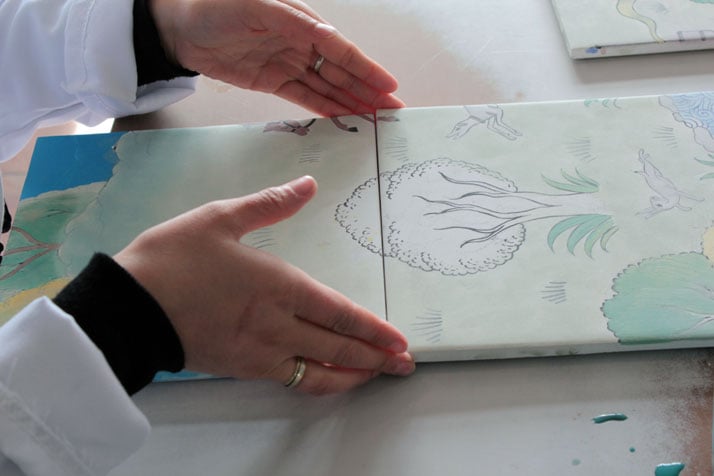
photo © Costas Voyatzis for Yatzer.com
The art of making Iznik tiles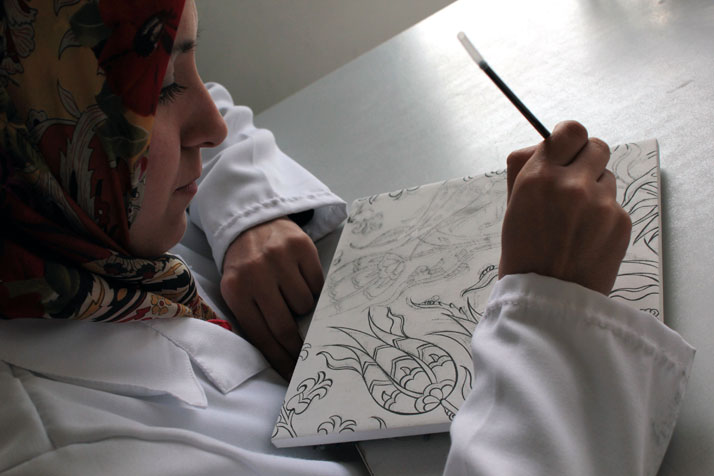
photo © Costas Voyatzis for Yatzer.com
photo © Costas Voyatzis for Yatzer.com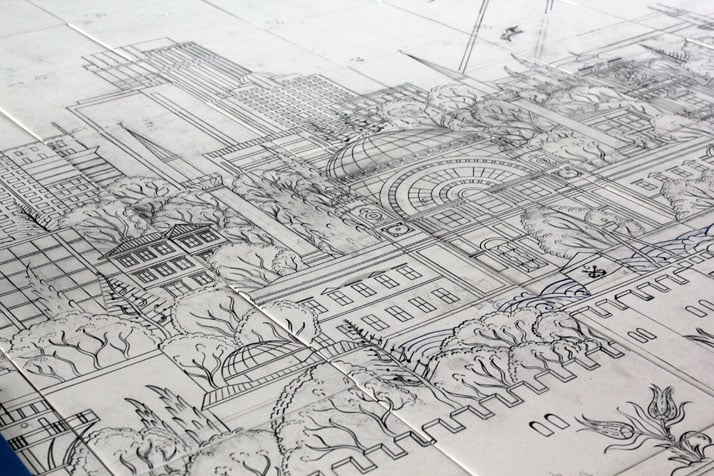
All in all, it can be said that Iznik tiles continue to emerge as high level competition due to the virtuosity of the artisans and the flexibility with which they develop new forms, suggesting us a futuristic and postmodern, but in any event, contemporary and updated view of decorating our “personal palaces”. After outshining the beloved Chinese porcelain, they might come as far as to even replace wallpapers, in the near future.
Tile designed by Murat Morova for "In tiles/Variations of iteration as a problem of surface"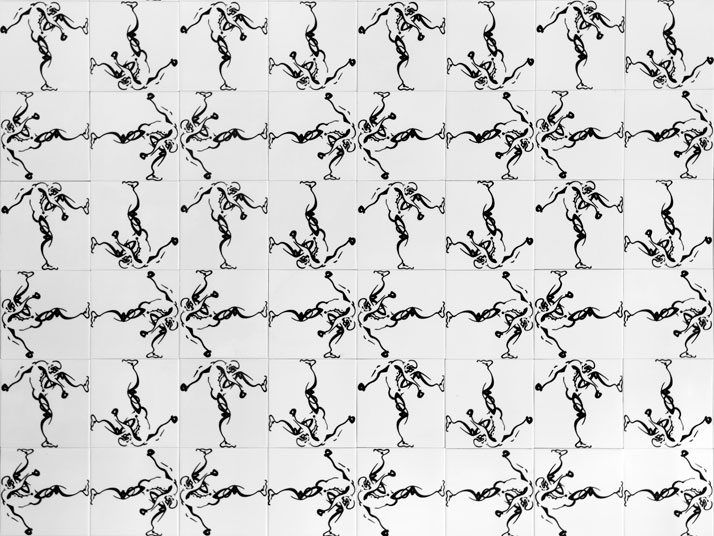
An exhibition curated by Nevzat Sayin in Hagia Sophia Museum, West gallery (2005)
© Iznik Foundation
Tile designed by Zaha Hadid for "In tiles/Variations of iteration as a problem of surface"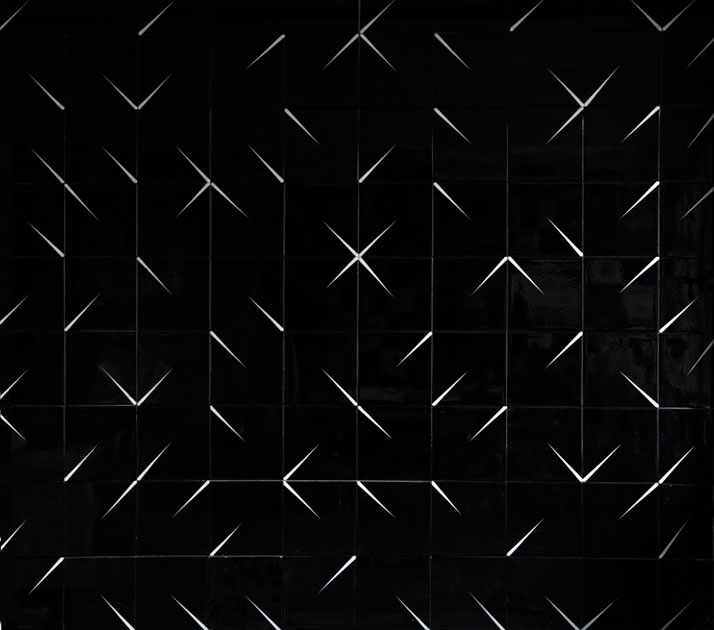
An exhibition curated by Nevzat Sayin in Hagia Sophia Museum, West gallery (2005)
© Iznik Foundation
Tile designed by Ettore Sottsass for "In tiles/Variations of iteration as a problem of surface"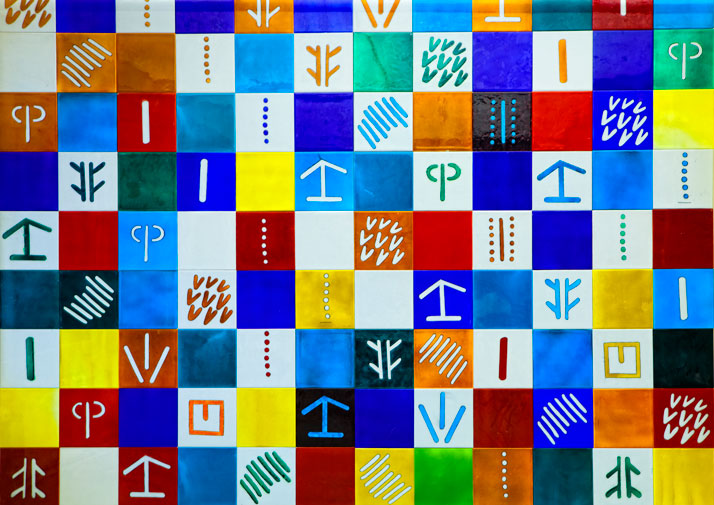
An exhibition curated by Nevzat Sayin in Hagia Sophia Museum, West gallery (2005)
© Iznik Foundation
Famous representatives of the word of the architecture and design, like Zaha Hadid and Ettore Sottsass must have surely foreseen this Iznik tiles’ new era…
Installation view of "In tiles/Variations of iteration as a problem of surface"
An exhibition curated by Nevzat Sayin in Hagia Sophia Museum, West gallery (2005)
© Iznik Foundation
Tiles for a subway station in Istanbul
photo © Iznik Foundation
Sheikh Zayed Bin Sultan Al Nahyan Mosque, ABU DABI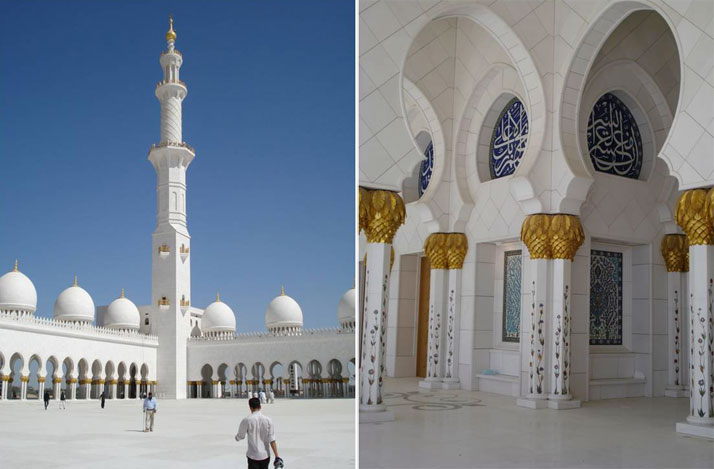
photo © Iznik Foundation
Tiles for Wagamama Restaurant, KANYON, Istanbul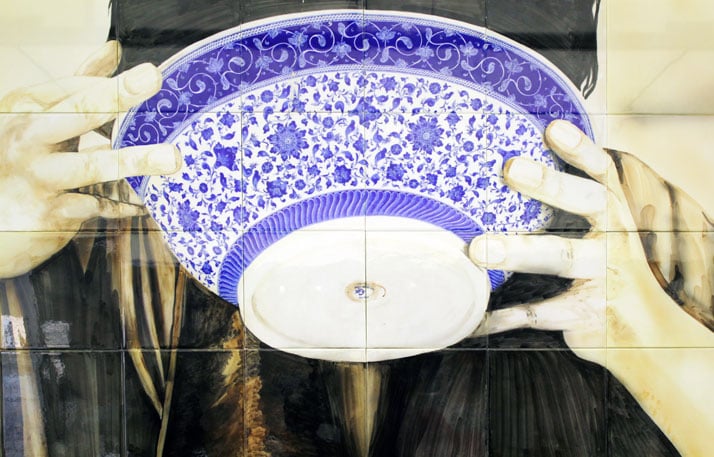
photo © Costas Voyatzis for Yatzer.com
photo © Costas Voyatzis for Yatzer.com